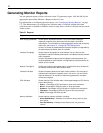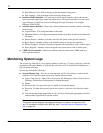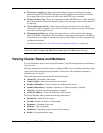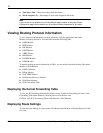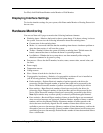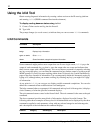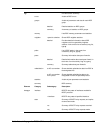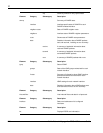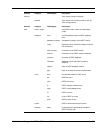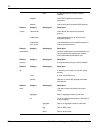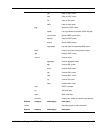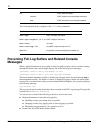
Nokia Network Voyager for IPSO 4.0 Reference Guide 487
For IPv6, click IPv6 Route Monitor under Monitor > IPv6 Monitor.
Displaying Interface Settings
To view the interface settings for your system, click Route under Monitor > Routing Protocols in
the tree view.
Hardware Monitoring
You can use Network Voyager to monitor the following hardware elements.
Watchdog timer—Monitors the kernel to detect system hangs. If it detects a hang, it reboots
the system. You can view the following information about the watchdog timer:
Current state of the watchdog timer.
Mode—i.e. reset mode indicates that the watchdog timer detects a hardware problem or
when the timer expires, it will reset the system.
Tickles—Number of times the system tickled the watchdog timer. Tickled means the
kernel contacted the timer to indicate the kernel is operating normally.
Last Reboot—Whether the last system reboot was done manually either using the
shutdown command or by power-cycling.
Fan sensors—Shows the fan ID number, location, status, current value, normal value, and
fan limit.
Power supply
Temperature sensors
Voltage sensors
Slots—Status of each device slot that is in use.
Cryptographic Accelerator—Statistics of cryptographic accelerator if one is installed on
your IP security platform. These include the following statistics:
Packet statistics—Packets Received: number of packets passed to the driver for
processing. Packets Dropped: number of packets that could not be processed by the
device. Packets Processed: number of packets successfully processed by the device
Byte statistics—Bytes Received: number of data bytes received by the driver for
processing. Bytes Dropped: number of data bytes that could not be processed by the
device. Bytes Processed: number of data bytes successfully processed by the device.
Note: Byte statistics may overflow quickly on a heavily utilized encrypted channel.
Error statistics—Received Digest: number of times an invalid digest was encountered
when a received message was processed. Random Number: number of times a random
number could not be generated. Buffer Alignment: number of buffers passed to the
device that were incorrectly aligned. Device: number of times that a device was not
available to process a data message. Memory: number of times that memory could not be
allocated to process a data message. Context: number of times that an invalid context was
specified to process a data message. Packet Header: number of times that an mbuf did not
have a valid header.






